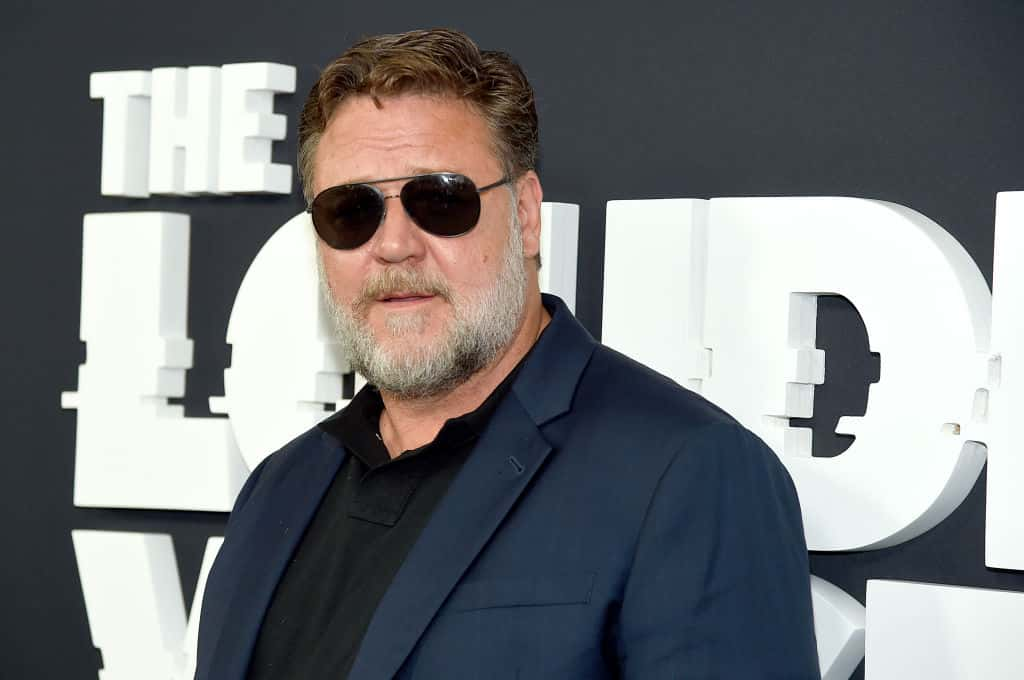In addition to decades of acting, Russell Crowe’s $120 million net worth in 2025 comes from investments, music, and sports endeavors, all of which demonstrate his extraordinarily diverse career. His ascent from a television actor from New Zealand to an Academy Award winner serves as striking evidence that flexibility and consistency maintain cultural and financial importance across generations.

Blockbuster wages became the foundation of his finances. He received $5 million for his pivotal part as Maximus in Gladiator and an additional $7.5 million for Proof of Life in the same year. With a $20 million salary from Master and Commander, he increased his profits even more, and A Beautiful Mind got him closer to $15 million. Robin Hood and Cinderella Man roles earned comparable amounts. Crowe earned almost $150 million from upfront film salaries alone during a 15-year period, proving that his steady demand made him incredibly resilient in Hollywood’s frequently unstable business.
Russell Crowe – Key Information
| Detail | Information |
|---|---|
| Full Name | Russell Ira Crowe |
| Date of Birth | April 7, 1964 (Age 61) |
| Birthplace | Wellington, New Zealand |
| Nationality | New Zealand–Australian |
| Occupations | Actor, Film Producer, Musician, Director |
| Net Worth (2025) | $120 million |
| Major Film Roles | Gladiator, A Beautiful Mind, Master and Commander, Cinderella Man, Les Misérables |
| Awards | Academy Award, BAFTA, Golden Globe, SAG Award |
| Music Ventures | 30 Odd Foot of Grunts, Indoor Garden Party |
| Sports Investment | Co-owner of South Sydney Rabbitohs Rugby League Club |
| Spouse | Danielle Spencer (m. 2003; div. 2018) |
| Children | Charles and Tennyson Crowe |
| Authentic Resource | Celebrity Net Worth – https://www.celebritynetworth.com |
Crowe was able to expand his impact through television. In addition to earning a mid-seven-figure fee for his role as Roger Ailes in Showtime’s The Loudest Voice, his producer credits demonstrated his proficiency with behind-the-camera work. He established a very effective model of professional longevity by switching between film and television with ease, something that many of his contemporaries found difficult to emulate.
Crowe’s story of wealth transcends screenplay. His investment in the South Sydney Rabbitohs rugby league team is eerily reminiscent to how Rob McElhenney and Ryan Reynolds turned Wrexham AFC into a cultural icon. Crowe brought the team back to life by investing around AU$3 million in a 25% ownership in 2006, which helped them win the Premiership in 2014. His investment, which is currently worth between $15 and $20 million, is a testament to his dedication to community and tradition in addition to being quite advantageous financially.
Even though it was less profitable, music provided Crowe with another way to express who he was. He led bands like Indoor Garden Party and 30 Odd Foot of Grunts, showcasing a creative restlessness that has significantly enhanced his image as an artist. These endeavors, which combine artistic expression with financial diversification, show a guy who is unwilling to be confined to a single medium, even though they are not as monetarily rewarding as acting.
Crowe’s story is also intertwined with philanthropy. He has contributed to disaster relief and educational institutions, frequently stepping in with incredibly obvious acts of kindness in times of need. Even if these contributions don’t increase his wealth, they do a great deal to close the gap between the public’s image of performers as being aloof and their actual socially active demeanor. Crowe’s generosity is similar to that of other charitable superstars, highlighting the fact that moral currency is just as important as material wealth.
Headlines were also generated by his private life, which was intertwined with his wealth. Despite the turmoil in Hollywood, he remained grounded thanks to his lengthy romance, ultimate marriage to singer Danielle Spencer, and their two sons. Prior to this, his relationship with Meg Ryan when Proof of Life was being filmed demonstrated how personal and professional arcs frequently overlap. Careful estate management made sure his money remained remarkably durable, even when his 2018 divorce changed the structure of his family.
Despite having less money than industry titans like Tom Cruise or George Clooney, Crowe’s story is especially inventive because of the way his decisions prioritized sustainability over show. His films have made over $5.3 billion worldwide, and he continues to earn millions from royalties and residuals. Together with investments in rugby and music, these revenue sources show a strategy that is far more flexible than those who only rely on one source of notoriety.
The overall developments in the industry are also reflected in Russell Crowe’s wealth. Actors who adapt are resilient in the face of the film industry’s recent shift toward streaming and multi-platform entertainment. Crowe’s readiness to consider roles in Marvel movies or ventures like The Pope’s Exorcist shows how adaptability keeps celebrities current. In this sense, his career and Denzel Washington’s are quite comparable, with both men creating long legacies that combine character-driven performances with blockbuster appeal.
Crowe’s financial tale has an effect on society as a whole. His rugby investments boosted Australian pride and demonstrated that celebrities can be more than simply entertainers; they can also act as cultural ambassadors. Fans view him as an active participant in their community rather than just Maximus. This merging of local identity and celebrity is especially helpful in changing the way that performers are perceived—from untouchable to relatable contributions.
